
Expanding Your O Scale Layout - Part 1
 TERRY SMITH looks at how you can get started in this larger RTR scale.
TERRY SMITH looks at how you can get started in this larger RTR scale.
Using the inspiration of our Gaugemaster Collection Brighton Works O Scale Starter set, he looks at how you can make use of just the track supplied to come up with a useable shunting layout.
This first instalment is about the groundwork required to produce a layout, and we will be following how this project comes together over the coming issues of RIGHT LINES.
The Background to the Project
There has been a lot of interest in this larger scale over the last few years, helped by the likes of first Heljan, then Dapol entering the market with affordable models based on British prototypes. While the thought of running a Class 52 Western with a rake of chocolate and cream Mk1 coaches may seem appealing to many, who has the space to run such a large train? There had to be an alternative?
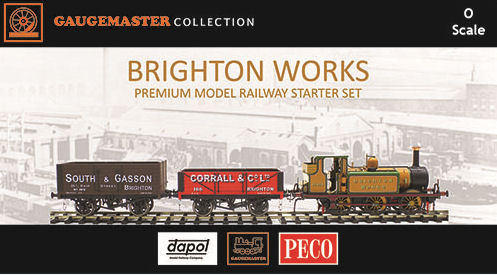
When Dapol announced they were to do a re-run of their delightful little SR Terrier locomotive in O gauge earlier this year, it was around the time we decided we wanted a range of our own exclusive models under the name Gaugemaster Collection. We are commissioning these from as many sources as necessary to obtain a range of diverse and interesting models, and with no limitation on what scale they were. Enter Brighton Works! This locomotive was based at Brighton, took on its Stroudley Improved Engine Green paint scheme after the war, and while based a Brighton Shed/Works it was often seen shunting in coal yards around the area. We then decided to also commission from Dapol a couple of private owner coal wagons based on local coal merchants.
It then dawned on us that if we could get others involved, we might be able to offer this as a complete starter set. We found Peco more than happy to help by supplying us with their O Scale SETRACK and adding our Gaugemaster GMC-COMBI Single Track Controller we had all the components in place.
We could, of course, have just included a circle of track and say "there you go", but we seriously wondered how many would want to see their finely detailed A1X and its two wagons going round and round in circles? It would be fare more useful to include track pieces to build a small shunting layout. So that’s what we put into our Brighton Works set – now of course you don’t have to buy this set to do something like what we are doing here, in fact you could make the scenic area even smaller, but I would perhaps like it to have been a little bigger. You will see why it ended up as it did further down the line!
A Baseboard? Think Out of the Box - or Even the Wardrobe!
So, what does a lazy Sunday morning laying in bed have to do with planning an O Scale railway layout? Well it’s seems like an unlikely place, but I’ll go on. We had recently purchased a second hand wardrobe to go alongside our existing one, which had had its doors removed years ago. "I'm not sure I like the new one with its doors on, it doesn't match the other one", my dearest remarked. She was right - it did look odd - so once I got up I simply removed them and, for the time being, stored them upright against the unit. Then it hit me - I ran downstairs and got a tape measure – could this be the start of a new O Scale layout? Well it was a little tight at 1665 x 415mm, but the proof of its suitability would be when the track was laid out. The door, which is a solid sheet of MDF 16mm thick, was strong enough to use without framework, and the great thing is it will store upright against the wardrobe it came off of!
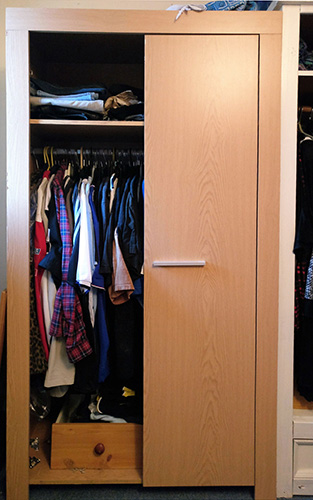
Sorry Dear - but you did say that you no longer wanted the Wardrobe doors!
Who said that you can't find space for a layout in your home? While my fortuitous piece of luck might not bestow everyone, what other sources are there apart from making up a traditional baseboard? Well you could go to the likes of Wickes or B&Q and find yourself a full-size interior door of ply construction. These typically measure closer to 2000 x 84mm, which will give you a bit more scope both with trackwork and scenery – but being stubborn I am going to stick with what I had.
Inspiration
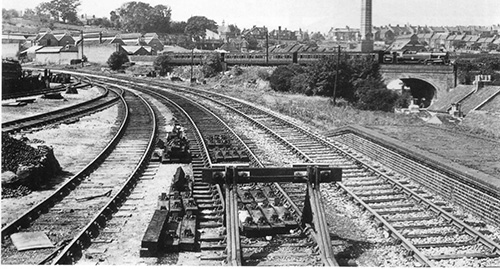
In this shot the coal yard is to the left, while the Kemptown branch continues next to the platform. In the distance a large tank, possibly a Fairburn is pulling is aging SR coaches along the line to Lewes passing over Hollingdean Road bridge.
So, what was my layout going to be based on? Well as space was tight and the set had a coal yard theme based in Brighton, what about a small Brighton Coal Yard? The inspiration for which is based on the real yard just off Princes Road, a few streets north of Roundhill Crescent in the Lewes Road area. This yard was adjacent to Lewes Road station on the Kemptown Branch and was situated just a few yards from the junction of the Brighton to Lewes mainline.
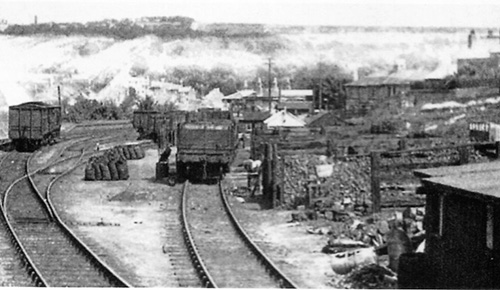
Looking east, and the yard is now on our right. This was cut into the side of a hill and vehicles gained access via Princes Road – The platform of Lewes Road station can be seen on the right.
The station closed in the early 1930s, but the Kemptown Branch remained opened to goods traffic until 1971 when it finally closed. The coal yard at Princes Road remained as such for a few years, but with it not being supplied by rail this too eventually closed. The yard was built into the side of one of Brighton’s many chalk hills and had dark brick walling in places to keep the chalk at bay.
The Trackwork
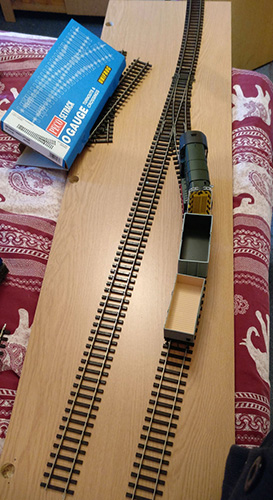
This was the first idea - have the track at an angle to board. However, this would require the track at the far end having a slight curve to it so it is parallel with an adjoining fiddle yard. I will show you have we did this in the next instalment.
So, the scene was set but how well could we make use of the allotted track sections? Firstly, lets list what Peco SETRACK comes in the Brighton Works set.
Well, try as I might, there really wasn’t the space to include another point to make this a little more interesting from an operational point of view, so I decided to work with what I had. Another issue is that layouts of this type really do need a separate fiddle yard. There would be nowhere a locomotive could do any meaningful shunting if it could not back on to another board – lucky I have two identical doors then!
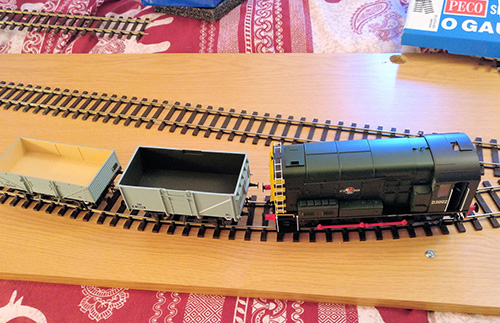
Where is the Terrier and the private owner wagons? Well I already had an 08 Shunter and these two unfitted wagons, and they take up the same amount of track space to see how things work.
I just started laying out the track in various configurations to come up with the most appealing and useful amount of track space. Considerations were also given to the situation of the coal staithes, the coal merchants office and any other lineside structures. As a scenic break I was going to use a bridge/tunnel mouth between the main board and the fiddle yard and with a real tunnel under Ditchling Road not more than few hundred yards away from this yard, I feel happy with my choice of location.
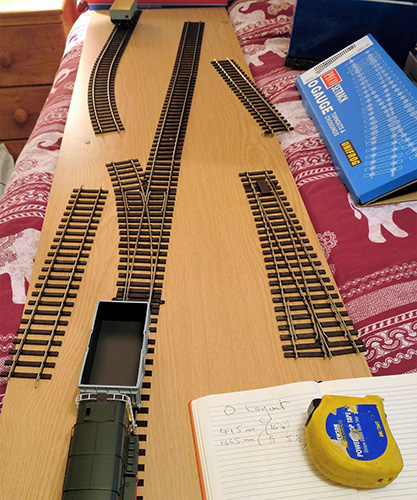
In this shot you can see that I am pushing the tracks further apart where the gap is. This will be filled by a piece cut from a standard straight. This gives more clearance between stock and will in fact be even greater than shown, so that the coal-staithes can be situated between the two sidings.
There's more on this layout build in, Expanding Your O Scale Layout - Part 2